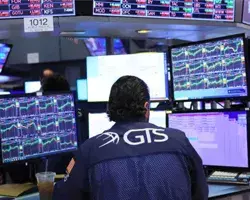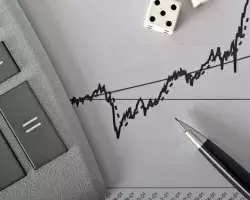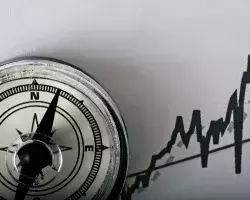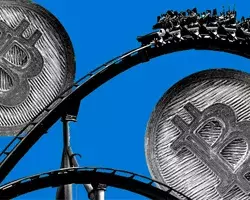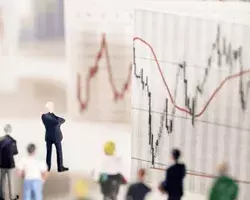Global Markets Tread Lightly Amidst Divergent Cues: Inflation and Interest Rate Talks Prevail | Daily Market Analysis
Key events: USA - Core PCE Price Index (MoM) (Jan) USA - Core PCE Price Index (YoY) (Jan) USA - Initial Jobless Claims USA - Chicago PMI (Feb) On Wednesday, the S&P 500 experienced a slight decline, but the broadening rally beyond the technology sector helped mitigate losses as investors awaited crucial inflation data that is expected to influence the Federal Reserve's stance on interest rates.
Mastering Parabolic Moves: Riding the Ups and Downs of the Stock Market Rollercoaster
In the fast-paced world of stocks and financial markets, parabolic moves represent an extraordinary phenomenon. These surges, characterized by rapid and unsustainable upward price movements of stocks or other financial assets, capture the attention of traders and investors alike. It's a term used to describe the moment when an asset's price accelerates sharply, tracing a parabolic curve on the price chart. In this article, we'll delve into the nature and characteristics of these parabolic moves, exploring the reasons behind their occurrence and their impact on the financial landscape.
Consistency in Trading: From Turbulence to Tranquility
Embarking on the journey of trading is akin to navigating the dynamic and ever-changing seas of the financial market. From extreme volatility to sustained trends, the market landscape is shaped by factors ranging from natural disasters to geopolitical events. Within this turbulence, the concept of consistency emerges as a beacon for traders seeking stability and success. In the realm of trading, consistency means the ability to navigate diverse market conditions and generate yields over the long term.
Market Volatility: Strategies, Tools, and Insights for Traders
Volatility stands as a pivotal element within the financial market, denoting the degree and speed at which an asset's price changes over time. Greater volatility indicates rapid fluctuations in the asset. For instance, if a stock commences trading at $10, ascends to $13, and then descends to $9 within a single session, particularly in a brief span, it qualifies as highly volatile - especially pertinent for scalpers.
Navigating Financial Storms: Top Assets for Trading in Times of Volatility
In recent months, the level of market volatility has surged significantly due to the impact of the coronavirus pandemic and the risks it poses to the global economy. According to most estimates, the world could be on the brink of a depression, with the potential disappearance of many companies. However, this is not the first time market volatility has been a concern.
A Comprehensive Guide to Successful Intraday Trading: Strategies, Pros and Cons, and More
In the fast-paced world of finance, where markets are constantly in motion, intraday trading has emerged as a dynamic and exhilarating approach to trading financial instruments. Unlike traditional investing, which often involves holding assets for the long term, intraday trading, commonly known as day trading, revolves around capitalizing on short-term price movements that unfold within minutes, hours, or even seconds.
The Currency Chronicles: Unraveling the British Pound's Resilience Against the US Dollar
The British Pound Sterling (GBP) and the United States Dollar (USD) stand as iconic currencies with intertwined histories spanning centuries of economic and geopolitical developments. In this article, we explore the origins and evolution of these currencies, delving into their historical contexts and key milestones that shaped their prominence in the global financial system. Furthermore, we examine the concepts of nominal and relative strength in currency, understanding how these measurements play pivotal roles in assessing a currency's purchasing power and its impact on trade dynamics.
Driving Forces Behind Cryptocurrencies' Volatility: Key Factors That Influence the Market
In the ever-evolving landscape of modern finance, cryptocurrencies have emerged as a disruptive force, captivating investors and traders with the promise of a decentralized and borderless financial system. Since the advent of Bitcoin in 2009, the crypto market has witnessed an unprecedented surge, giving rise to thousands of alternative digital assets, each with its unique features and use cases.
How the CBOE VIX Index Works to Predict Market Volatility
In the ever-changing landscape of financial markets, assessing market volatility and understanding investor sentiment are crucial aspects of making informed investment decisions. The VIX index, also known as the "CBOE Volatility Index" or the "Fear Index," stands as a prominent barometer for precisely these purposes. Created by the Chicago Board Options Exchange (CBOE) in 1993, the VIX has grown into a widely recognized benchmark, offering insights into market risk and uncertainty.
Volatility: A Comprehensive Guide to Trading Volatile Currency Pairs
Volatility in the currency market refers to the degree of price movements within a specific timeframe. It plays a crucial role in shaping trading opportunities and risk management strategies for traders. Understanding volatility and its measurement is vital for navigating the ever-changing forex market. This article explores the concept of volatility, its measurement using indicators like the Average True Range (ATR), and provides insights into the most volatile currency pairs.
